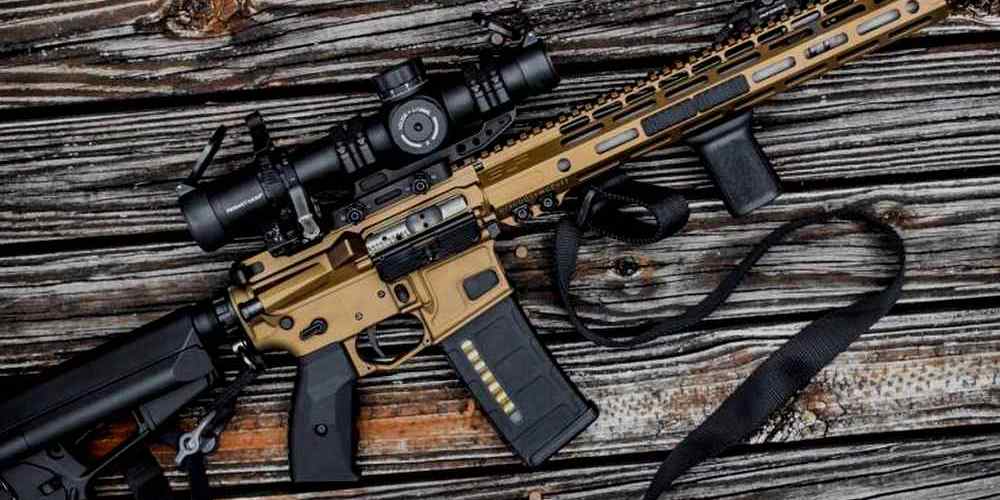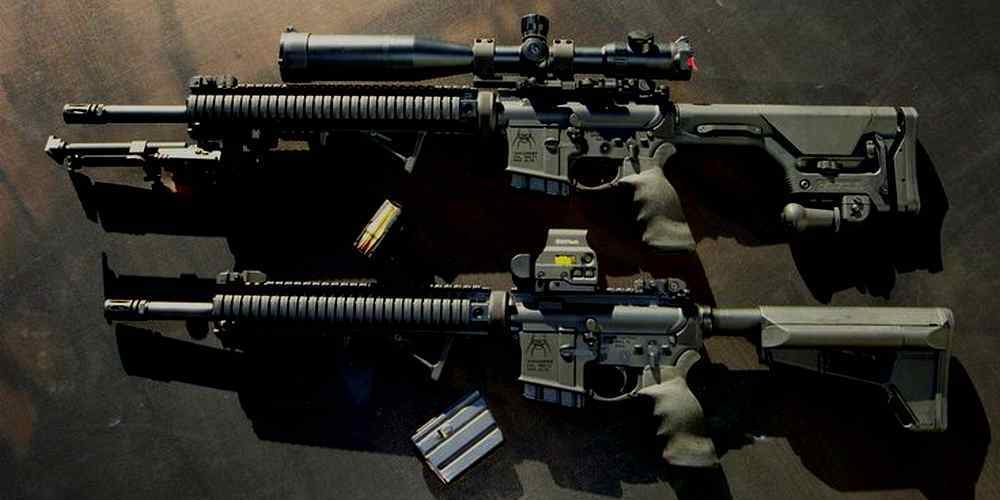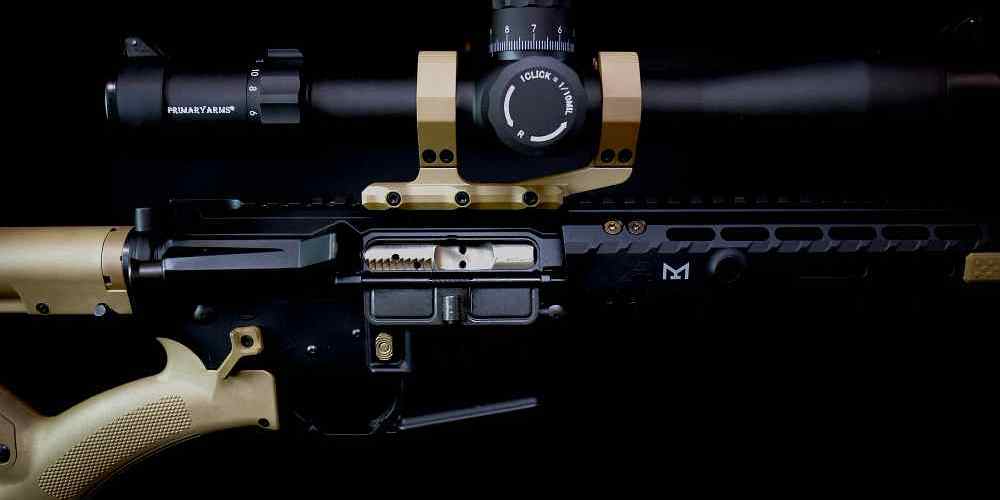“Enhance your AR15 with a piston system for improved performance and reliability. Learn the pros, cons, and how-to in building your own.”
Benefits of Using a Piston System in an AR15
Building an AR15 with a piston system can offer several benefits over a traditional direct impingement system. While both systems have their advantages and disadvantages, many gun enthusiasts prefer the piston system for its reliability, ease of maintenance, and reduced fouling. In this article, we will explore the pros and cons of using a piston system in an AR15, as well as provide a step-by-step guide on how to build one.
One of the main advantages of a piston system is its increased reliability. Unlike a direct impingement system, which relies on gas pressure to cycle the action, a piston system uses a piston to drive the bolt carrier group. This can result in a cleaner and more consistent operation, especially in adverse conditions such as dust, dirt, or mud. Additionally, a piston system can help reduce the risk of malfunctions caused by carbon buildup, as the gas is vented out of the rifle rather than being directed back into the chamber.
Another benefit of using a piston system is its ease of maintenance. Because the gas system is separate from the chamber, cleaning and maintenance are typically simpler and quicker. This can be especially advantageous for those who use their AR15 frequently or in harsh environments, as regular cleaning is essential for optimal performance. Additionally, a piston system can help extend the life of your rifle by reducing wear and tear on critical components.
One of the main drawbacks of a piston system is its added weight and cost. Piston systems are typically heavier than direct impingement systems, which can affect the overall balance and handling of the rifle. Additionally, piston systems tend to be more expensive to purchase and install, which may deter some budget-conscious shooters. However, many gun owners find that the benefits of a piston system outweigh these drawbacks, especially when it comes to reliability and ease of maintenance.
If you are interested in building an AR15 with a piston system, here is a step-by-step guide to help you get started. First, you will need to purchase a piston conversion kit, which typically includes a new gas block, piston, and operating rod. Next, disassemble your AR15 and remove the existing gas block, tube, and bolt carrier group. Install the new gas block and piston according to the manufacturer’s instructions, making sure to properly align and secure all components.
Once the piston system is installed, reassemble your AR15 and perform a function check to ensure everything is working correctly. You may need to make minor adjustments to the gas system to achieve optimal performance. Finally, take your newly built AR15 to the range and test fire it to ensure reliability and accuracy. With proper care and maintenance, your AR15 with a piston system can provide years of reliable service and enjoyment.
In conclusion, building an AR15 with a piston system can offer several benefits, including increased reliability, ease of maintenance, and reduced fouling. While there are some drawbacks to using a piston system, many gun enthusiasts find that the pros outweigh the cons. If you are considering building an AR15 with a piston system, be sure to do your research and choose high-quality components to ensure optimal performance. With the right tools and know-how, you can build a reliable and accurate rifle that will serve you well for years to come.
Drawbacks of Using a Piston System in an AR15
When it comes to building an AR15, there are many decisions to make, including whether to use a direct impingement system or a piston system. While a piston system offers some advantages, there are also drawbacks to consider before making your decision.

One of the main drawbacks of using a piston system in an AR15 is the added weight. Piston systems are typically heavier than direct impingement systems, which can affect the overall balance and handling of the rifle. This extra weight can also make the rifle more cumbersome to carry for extended periods of time, especially if you are using it for hunting or other outdoor activities.
Another drawback of using a piston system is the increased complexity of the rifle. Piston systems have more moving parts than direct impingement systems, which can lead to more potential points of failure. This means that piston systems may require more maintenance and cleaning to keep them functioning properly. Additionally, the added complexity of a piston system can make it more difficult to troubleshoot and repair if something does go wrong.
In addition to the added weight and complexity, another drawback of using a piston system in an AR15 is the cost. Piston systems are typically more expensive than direct impingement systems, which can be a significant factor for budget-conscious builders. The higher cost of a piston system may also limit your options when it comes to other components of your build, as you may need to allocate more of your budget towards the piston system itself.
Despite these drawbacks, there are still some benefits to using a piston system in an AR15. Piston systems are known for their reliability, as they are less prone to fouling and carbon buildup than direct impingement systems. This can lead to improved performance and a longer lifespan for your rifle. Additionally, piston systems can offer a smoother shooting experience, with less felt recoil and muzzle rise compared to direct impingement systems.
If you have decided to build an AR15 with a piston system, there are a few key steps to follow to ensure a successful build. First, make sure to choose a high-quality piston system from a reputable manufacturer. This will help to ensure that your rifle functions properly and reliably. Next, carefully follow the manufacturer’s instructions for installing the piston system, as proper installation is crucial for optimal performance.
Once you have installed the piston system, be sure to test fire your rifle to ensure that everything is functioning correctly. If you encounter any issues, don’t hesitate to reach out to the manufacturer for assistance. With proper care and maintenance, your AR15 with a piston system can provide you with years of reliable performance on the range or in the field.
In conclusion, while there are drawbacks to using a piston system in an AR15, there are also benefits to consider. By weighing the pros and cons and following the proper steps for installation and maintenance, you can build a high-quality rifle that meets your needs and preferences. Whether you choose a piston system or a direct impingement system, building an AR15 is a rewarding experience that allows you to customize your rifle to your exact specifications.
Step-by-Step Guide on Building an AR15 with a Piston System
Building an AR15 with a piston system can offer several advantages over the traditional direct impingement system. While both systems have their own set of pros and cons, many gun enthusiasts prefer the piston system for its reliability and ease of maintenance. In this article, we will discuss the pros and cons of using a piston system in an AR15, as well as provide a step-by-step guide on how to build one.
One of the main advantages of using a piston system in an AR15 is its increased reliability. The piston system operates by using a piston to push the bolt carrier group back, rather than relying on gas to cycle the action. This can result in a cleaner and cooler running rifle, as the gas is vented out of the rifle rather than being directed back into the chamber. This can help reduce fouling and carbon buildup, which can lead to malfunctions and decreased performance.
Another advantage of using a piston system is its ease of maintenance. Because the gas is vented out of the rifle, there is less carbon buildup in the chamber and bolt carrier group. This means that you will spend less time cleaning your rifle and more time shooting it. Additionally, the piston system is less prone to fouling, which can help increase the lifespan of your rifle.
However, there are also some drawbacks to using a piston system in an AR15. One of the main disadvantages is the added weight and complexity of the system. The piston system adds extra components to the rifle, which can increase the overall weight of the rifle. Additionally, the piston system can be more difficult to install and maintain compared to a direct impingement system.
Now that we have discussed the pros and cons of using a piston system in an AR15, let’s move on to the step-by-step guide on how to build one. Before you begin, make sure you have all the necessary tools and parts to complete the build. You will need an AR15 lower receiver, upper receiver, barrel, gas block, piston system kit, bolt carrier group, charging handle, and handguard.
Start by assembling the lower receiver according to the manufacturer’s instructions. Once the lower receiver is assembled, move on to installing the upper receiver. Attach the barrel to the upper receiver using the barrel nut and handguard. Next, install the gas block and piston system kit onto the barrel. Make sure everything is properly aligned and tightened before moving on to the next step.
Once the piston system is installed, insert the bolt carrier group into the upper receiver and attach the charging handle. Finally, attach the handguard to the barrel and upper receiver. Your AR15 with a piston system is now complete and ready to be tested at the range.
In conclusion, building an AR15 with a piston system can offer several advantages over the traditional direct impingement system. While there are some drawbacks to using a piston system, many gun enthusiasts prefer it for its reliability and ease of maintenance. By following this step-by-step guide, you can build your own AR15 with a piston system and enjoy a cleaner, cooler running rifle.
Comparison of Piston System vs. Direct Impingement System in AR15s
When it comes to building an AR15, one of the key decisions you’ll need to make is whether to go with a piston system or a direct impingement system. Both have their pros and cons, and understanding the differences between the two can help you make an informed decision.
Let’s start by looking at the direct impingement system, which is the more traditional option. In a direct impingement system, gas from the fired round is directed back into the chamber to cycle the action. This system is simple and lightweight, making it a popular choice for many AR15 builders. However, direct impingement systems can be prone to fouling and heat buildup, which can affect reliability and accuracy over time.
On the other hand, a piston system operates by using a piston to cycle the action, rather than directing gas back into the chamber. This can help reduce fouling and heat buildup, leading to improved reliability and accuracy. Piston systems are also known for being easier to clean and maintain, making them a popular choice for those who prioritize ease of use.
In terms of performance, both systems have their strengths and weaknesses. Direct impingement systems are known for their smooth recoil and fast cycling rate, making them a good choice for competitive shooting or rapid-fire situations. However, they can be more sensitive to fouling and require more frequent cleaning to maintain optimal performance.
Piston systems, on the other hand, are known for their reliability and durability. They can handle a wider range of ammunition types and are less prone to malfunctions due to fouling. This makes them a good choice for those who prioritize reliability and consistency in their shooting experience.
When it comes to building an AR15 with a piston system, there are a few key steps to keep in mind. First, you’ll need to choose a piston system that is compatible with your AR15 lower receiver. There are many options available on the market, so be sure to do your research and choose a system that meets your needs and preferences.
Next, you’ll need to install the piston system onto your AR15 lower receiver. This process can vary depending on the specific system you choose, so be sure to follow the manufacturer’s instructions carefully. Once the piston system is installed, you’ll need to test it to ensure that it cycles smoothly and reliably.
In conclusion, both piston systems and direct impingement systems have their pros and cons when it comes to building an AR15. Understanding the differences between the two can help you make an informed decision that meets your needs and preferences. Whether you prioritize reliability, ease of maintenance, or performance, there is a system out there that is right for you. Happy building!
Tips and Tricks for Optimizing Performance of an AR15 with a Piston System
Building an AR15 with a piston system can be a great way to optimize the performance of your rifle. While the traditional direct impingement system has been the standard for AR15s for many years, the piston system offers some distinct advantages that may be worth considering. In this article, we will explore the pros and cons of using a piston system in your AR15, as well as provide a step-by-step guide on how to build one.
One of the main advantages of using a piston system in an AR15 is that it can help to reduce the amount of fouling and carbon buildup in the rifle. With a direct impingement system, gas is directed back into the chamber to cycle the action, which can lead to a buildup of carbon and other debris. A piston system, on the other hand, uses a piston to cycle the action, which helps to keep the chamber cleaner and reduce the need for frequent cleaning.
Another advantage of using a piston system is that it can help to reduce the amount of heat that is transferred to the bolt carrier group. This can help to improve the overall reliability of the rifle, as excessive heat can cause parts to wear out more quickly. Additionally, a piston system can help to reduce the amount of felt recoil, making the rifle more comfortable to shoot.
However, there are also some drawbacks to using a piston system in an AR15. One of the main disadvantages is that piston systems can be more expensive and complex to build than direct impingement systems. Additionally, some shooters may find that piston systems are not as accurate as direct impingement systems, although this can vary depending on the specific rifle and ammunition used.
If you are interested in building an AR15 with a piston system, here is a step-by-step guide to help you get started. First, you will need to gather all of the necessary parts and tools. This will include a piston system kit, a barrel, a bolt carrier group, a handguard, a lower receiver, and various other components.
Once you have all of the necessary parts and tools, you can begin assembling your rifle. Start by installing the barrel onto the upper receiver, making sure to properly torque the barrel nut. Next, install the piston system onto the barrel, making sure that all of the components are properly aligned and secured.
After installing the piston system, you can install the bolt carrier group and handguard onto the upper receiver. Finally, install the lower receiver onto the upper receiver, making sure that all of the components are properly aligned and secured.
Once you have completed the assembly process, you can test fire your rifle to ensure that it is functioning properly. If you encounter any issues, be sure to troubleshoot and make any necessary adjustments.
In conclusion, building an AR15 with a piston system can be a great way to optimize the performance of your rifle. While there are some pros and cons to using a piston system, many shooters find that the advantages outweigh the disadvantages. By following the step-by-step guide provided in this article, you can build your own AR15 with a piston system and enjoy improved reliability and performance on the range.




